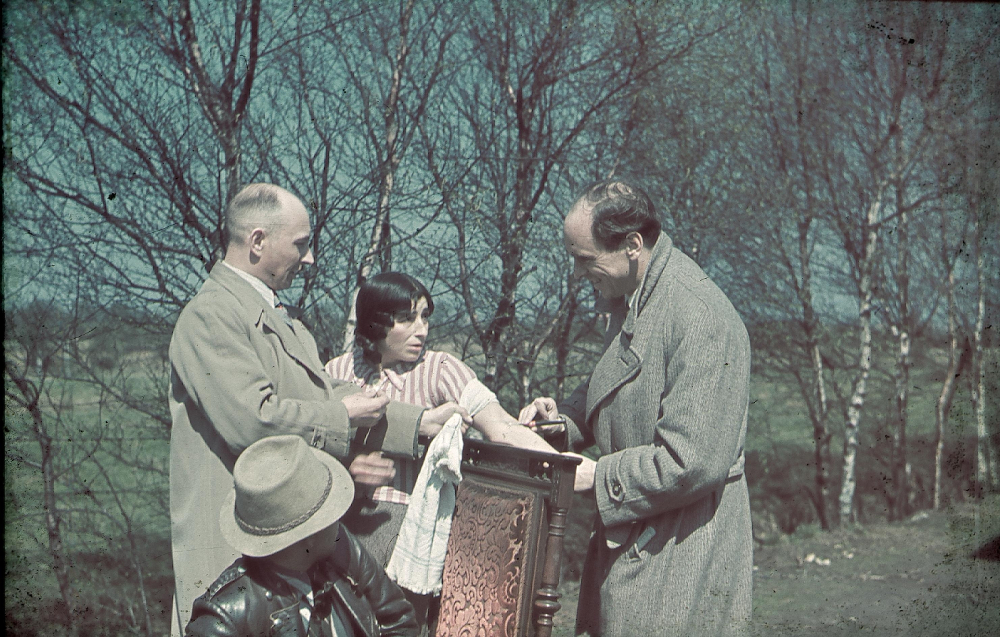Um Sinti*zze und Rom*nja einheitlich als ‚Zigeuner‘ erkennen und definieren zu können, wurde 1936 am Reichsgesundheitsamt in Berlin die ‚Rassenhygienische und Bevölkerungsbiologische Forschungsstelle‘ unter Leitung von Robert Ritter eingerichtet. Der in Pädagogik und Medizin promovierte Ritter hatte zuvor als Assistenzarzt an der Nervenklinik der Universität Tübingen gearbeitet und dort im Rahmen seiner Habilitation, in der er die Erblichkeit von Kriminalität zu beweisen suchte, auch erbgeschichtliche Untersuchungen an Sinti*zze und Rom*nja durchgeführt. Er vertrat die Theorie, dass das „Zigeunerproblem“ vor allem ein „Mischlingsproblem“ sei und unterstellte „Zigeunermischlingen“ eine „ererbte Kriminalität“. Als Lösung schlug er Zwangssterilisationen und konsequente Überwachung vor. Alle ‚Zigeuner‘ sollten nun erfasst und ihre vermeintliche Minderwertigkeit wissenschaftlich nachgewiesen werden.
Die Bedeutung der ‚Ritter-Stelle‘ nahm mit dem Erlass über die ‚Regelung der Zigeunerfrage‘ von 1938 zu, da alle Sinti*zze und Rom*nja über 6 Jahren nun nach ‚rassenbiologischen Gesichtspunkten‘ klassifiziert werden sollten. Die Forschungsstelle arbeitete eng mit der Polizei, insbesondere der ‚Reichszentrale zur Bekämpfung des Zigeunerunwesens‘ im Reichskriminalpolizeiamt, und anderen staatlichen wie auch kirchlichen Einrichtungen zusammen.
Die Wissenschaftler fertigten Stammbäume an, nahmen Fotos auf und legten ein ‚Zigeunersippenarchiv‘ an. Zur Veranschaulichung der vermeintlich ‚rassischen Besonderheiten‘ wurden unter anderem Kopfmodelle hergestellt. Die Forschungsstelle diente zudem als Auskunftsstelle für Behörden und gab Empfehlungen für Zwangssterilisationen und erzwungene Schwangerschaftsabbrüche. Sie teilte die Sinti*zze und Rom*nja nach der Abstammung in nicht weniger als 34 Gruppen ein. Als ‚Mischlinge‘ galten dabei schon Personen, bei denen mindestens zwei Großelternteile zu je einem Viertel von ‚Zigeunern‘ abstammten. In der gutachterlichen Praxis setzte sich dann eine vereinfachte Dreiteilung der ‚Zigeuner-Mischlinge‘ nach ‚vorwiegend zigeunerischem‘ (ZM+), ‚gleichem zigeunerischen und deutschen‘ (ZM) und ‚vorwiegend deutschem Blutsanteil‘ (ZM-) durch. Bis 1944 wurden knapp 24.000 ‚Rassengutachten‘ verfasst. Diese bildeten eine wichtige Grundlage für weitere Verfolungsmapnahmen gegen die Sinti*zze und Rom*nja, die in die Deportation und Ermordung eines großen Teils dieser ethnischen Minderheit mündeten.
Robert Ritter übernahm 1942 neben der Forschungsstelle auch die Leitung des Kriminalbiologischen Instituts im Reichskriminalpolizeiamt; 1943 wurde er zudem Direktor des Reichsgesundheitsamtes.
Nach Kriegsende blieb er unbehelligt. Von 1947 bis 1950 war er Arzt im Stadtgesundheitsamt Frankfurt am Main. Ein auf Initiative Überlebender gegen ihn eingeleitetes staatsanwaltschaftliches Ermittlungsverfahren wurde eingestellt.


